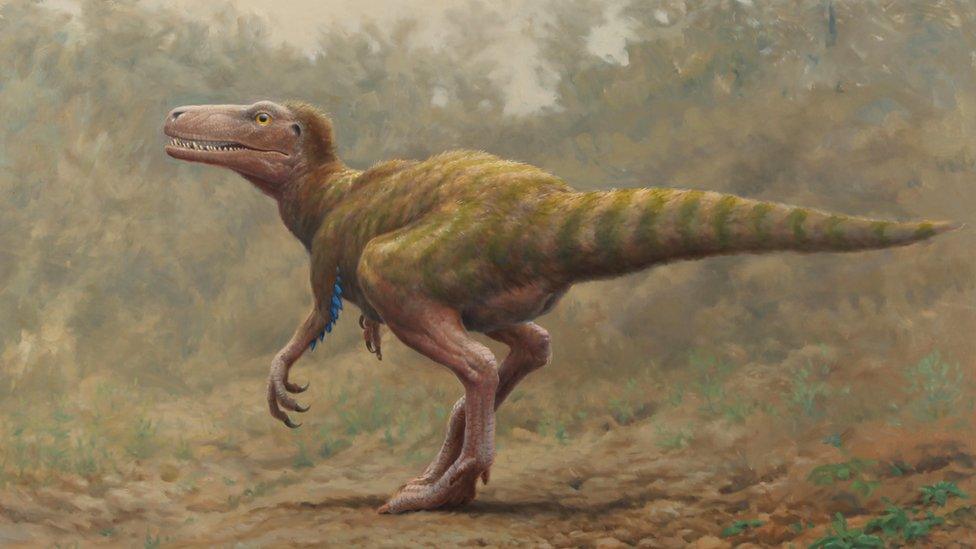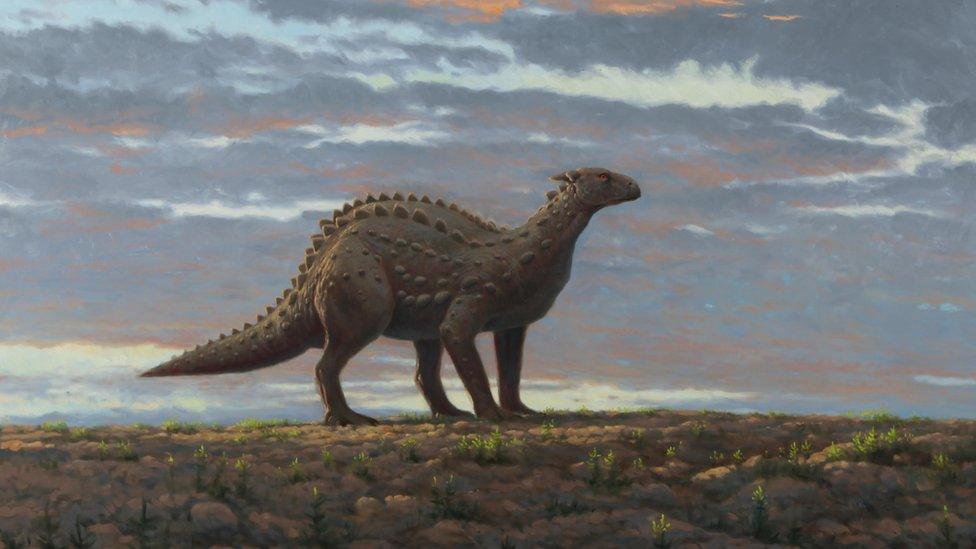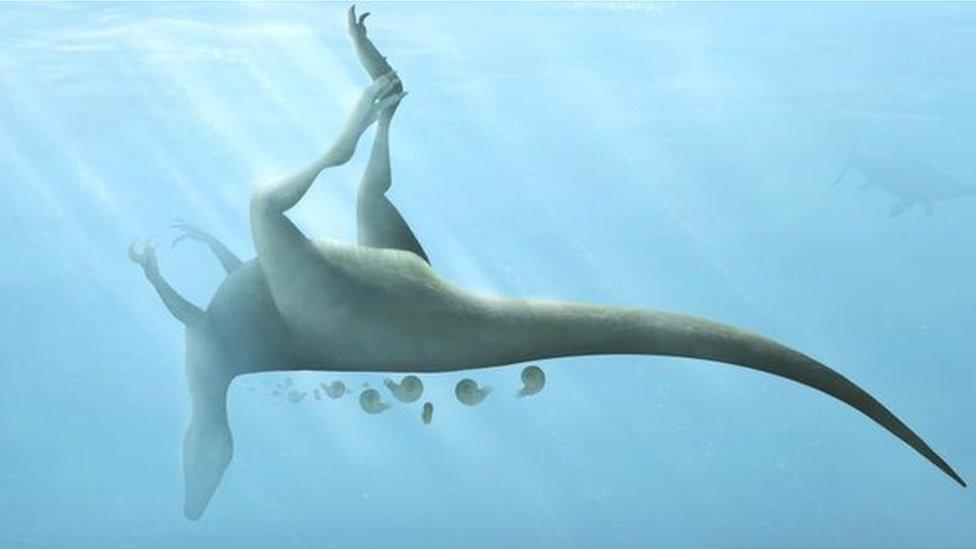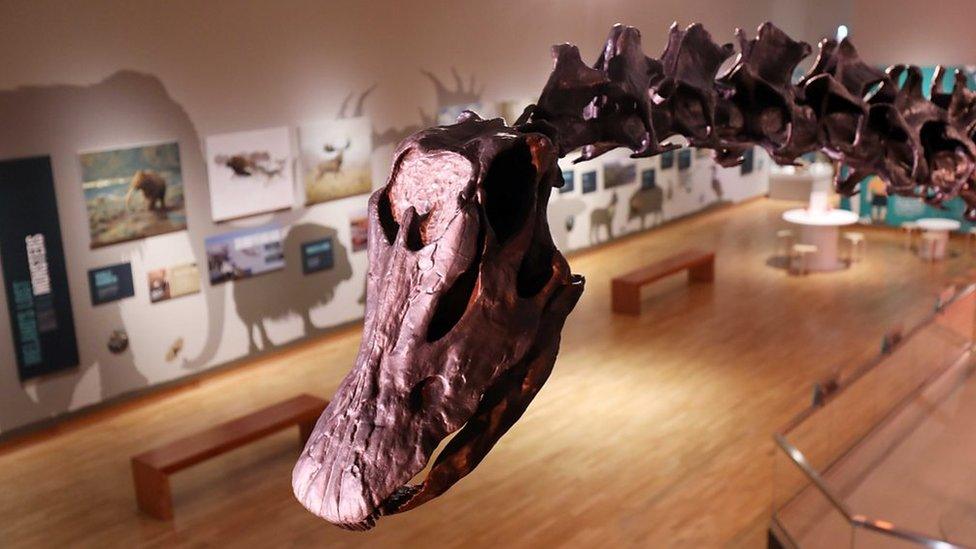Antrim dinosaur bones 'belong to different species'
- Published

One of the bones comes from the tibia (lower leg bone) of a two-legged meat-eater similar to Sarcosaurus
The only dinosaur bones ever found in Ireland have been confirmed to belong to two different species.
The bones were previously discovered on the east coast of County Antrim.
But a new scientific study from the universities of Portsmouth and Queen's in Belfast has confirmed the origins of the bones for the first time.
One is part of the lower leg bone of a carnivore similar to Sarcosaurus; the other is from the upper leg bone of a Scelidosaurus, a four-legged herbivore.
The two fossil bones, confirmed to be from early Jurassic rocks, were discovered in Islandmagee during two separate finds in the late 19th Century and the 1980s.
Originally it was assumed the fossils were from the same animal, but new analysis published in the Proceedings of the Geologists' Association has confirmed they belong to the two different species.
Ireland was underwater for most of the period during which dinosaurs roamed the earth, so there is less chance the remains of land animals would be preserved in rocks dating to that period.
Ulster Museum has announced plans to put the bones on display when it reopens after the current coronavirus restrictions are lifted.
Dinosaurs 'swept out to sea'
Dr Mike Simms, a curator and palaeontologist at National Museums NI, said the development was "a hugely significant discovery".

Experts suggest Scelidosaurus may have been a coastal animal, perhaps even eating seaweed like modern-day marine iguanas
"The great rarity of such fossils here is because most of Ireland's rocks are the wrong age for dinosaurs, either too old or too young, making it nearly impossible to confirm dinosaurs existed on these shores," he said.
"The two dinosaur fossils... found were perhaps swept out to sea, alive or dead, sinking to the Jurassic seabed where they were buried and fossilised."
Robert Smyth, researcher at the University of Portsmouth and Professor David Martill, used high-resolution 3D digital models of the fossils in their analysis of the bone fragments, produced by Dr Patrick Collins of Queen's University Belfast.
"Analysing the shape and internal structure of the bones, we realised that they belonged to two very different animals," said Mr Smyth, who is originally from Ballymoney.
"Despite being fragmentary, these fossils provide valuable insight on a very important period in dinosaur evolution, about 200 million years ago.
"It's at this time that dinosaurs really start to dominate the world's terrestrial ecosystems."
Professor Martill said: "Scelidosaurus keeps on turning up in marine strata, and I am beginning to think that it may have been a coastal animal, perhaps even eating seaweed like marine iguanas do today."
The study is part of a larger project to document Jurassic rocks in Northern Ireland and draws on many fossils in Ulster Museum's collections.
- Published12 August 2020

- Published28 September 2018
